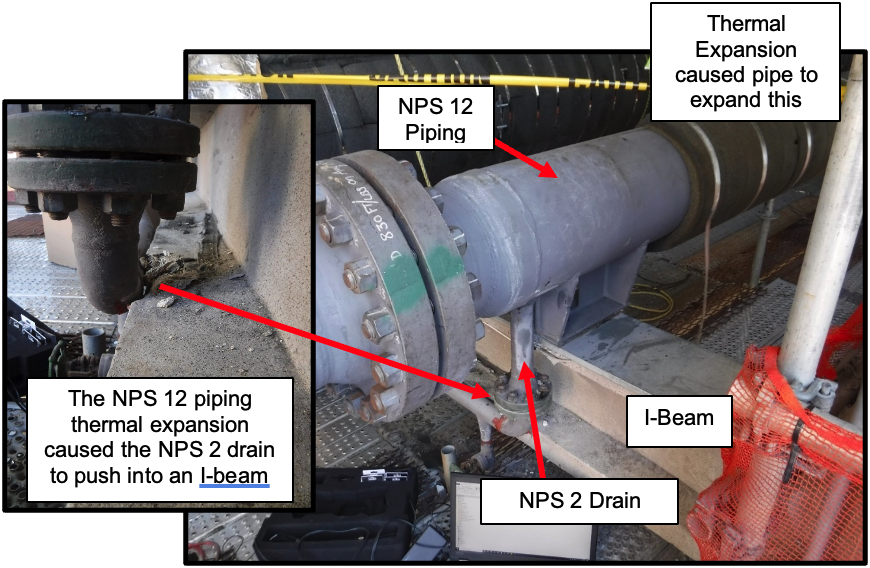Introduction
3D laser scans are used regularly during pipeline digs to monitor the fitness for service of pitted pipeline components. Along with this function, the technique has non-routine but equally effective applications for inspecting pressure piping, tanks, well casings, vessels, and other equipment. This article exemplifies 3D laser scans for assessing:
- The reliability of piping subjected to significant thermal stresses
- Bulges and repairs in a tank
- Corrosion under insulation in a tank
- Fit up of a new pump casing
- Internal diameter pitting in a pressure vessel
- Validating/Calibrating heat exchanger remote field testing tube wall loss assessments
- Identifying piping with erosion losses
Technology Summary
This metrology technique is a line-of-sight-based inspection: only what can be seen can be scanned and measured. Laser scanning captures a 3D model (mesh) of the surface. Currently, nondestructive field examination services use short- and long-range laser scans.
Short-range scans (commonly known as handheld) are mainly used for corrosion assessments of small areas. Typically, they have an accuracy of ±0.001 inch and can be performed at distances of 12 inches (or less) from the part inspected.
Long-range scans (commonly known as terrestrial laser scanning) are performed on larger components to assess their dimensions. Typically, they have an accuracy of ± 0.04 inch and can be performed at distances of 3.3 – 164 feet from the part inspected.
Laser scanning was historically generally limited to cylindrical applications such as tanks, piping, heat exchanger tubes, catalytic reforming heater tubes and shells of coke drums and pressure vessels. However, software advances allow for the examination of noncylindrical equipment common in a plant environment, such as bends, vessel heads, heat exchangers, and tank floors. Extracting measurements from noncylindrical objects is reliable and efficient [1-3].
The information in this article focuses on the metrology side of laser scanning, which encompasses extracting a 3D model for the application and extracting measurements for comparison. Typically, the measurements are compared to a standard or code to determine its acceptability. Another common application is reverse engineering, which is not covered in this paper. A common reverse engineering application uses laser scanning to extract a 3D model of a part for which a drawing does not exist. The scans are used to make a 2D drawing, which can then be manufactured.
Example 1: Assessing the Reliability of Piping Subjected to Significant Thermal Stresses
When a newly commissioned plant was started for the first time, an NPS 12 pipe expanded, pushing an NPS 2 drain into an I-Beam (see Figure 1). An operator noted that the NPS 2 drain had deflected, so operations immediately shut down the plant to investigate further. One question was whether the NPS 12 and NPS 2 pipes were plastically or elastically deformed. In other words, how prone were they to fail? Based on this information, the mitigation and redesign had to be assessed.

The NPS 12 piping did not appear to have local deformation, such as dents or bulges. The ovality was within the manufacturer’s ±1%OD tolerance based on the measurements extracted from the laser scans. Thus, it had not been deformed. As seen in Figure 2, the NPS 2 drain was at an angle of ~88° (instead of 90°) to the normal axis of the NPS 12 piping. Ideally, one would have a laser scan before the equipment was in operation to compare this result. A prior or baseline scan would provide definitive information regarding how much the NPS 2 drain had deflected from its condition prior to the plant start-up. After talking to the manufacturer and discussing their typical tolerances, it was decided that the NPS 2 drain had plastically deformed. These discussions underline the importance of discussing results with other trades and engineers, as the results from laser scanning can only be put in context once we know typical tolerances.



















Comments and Discussion
Add a Comment
Please log in or register to participate in comments and discussions.